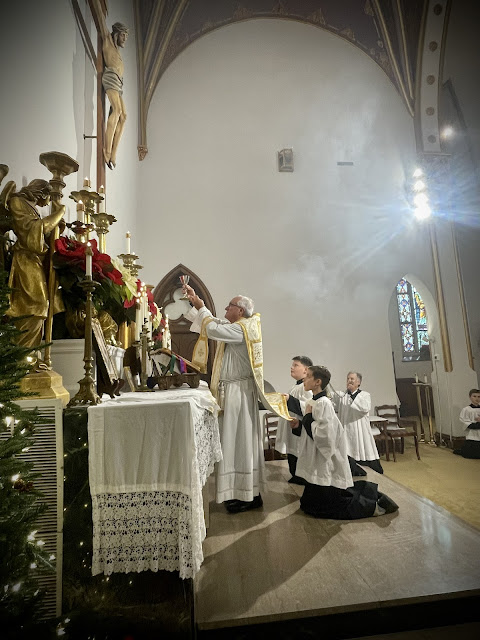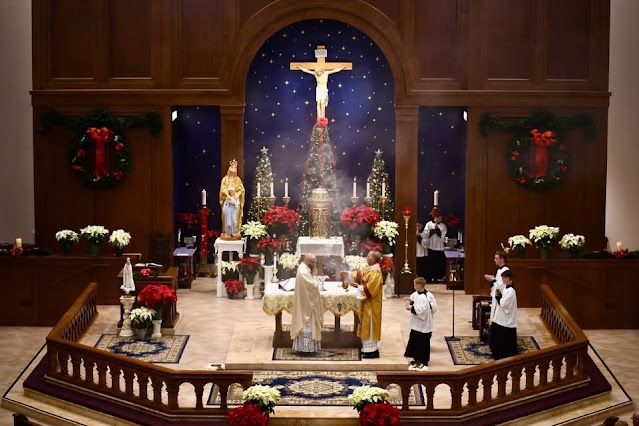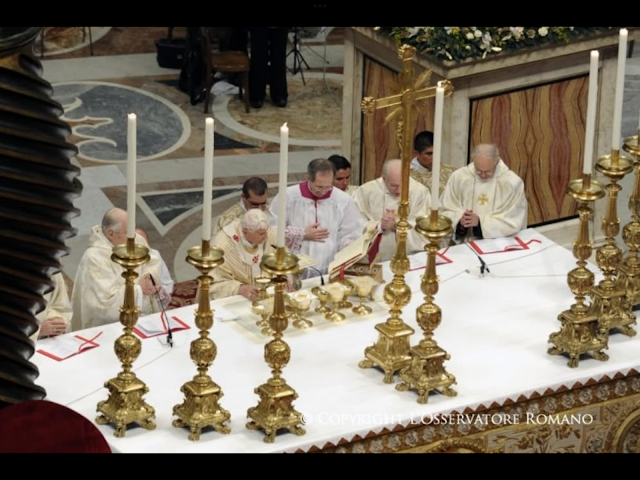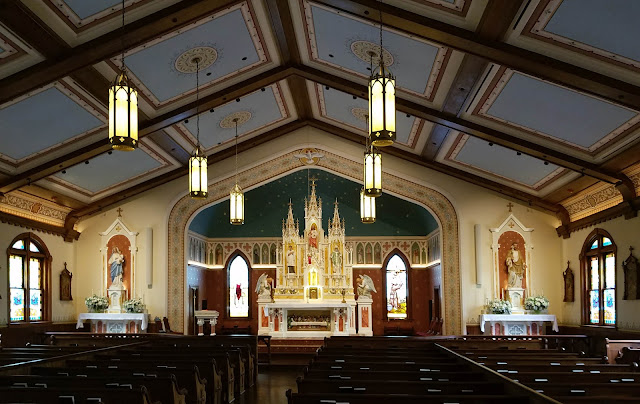The parish where I grew up in and eventually left to go to seminary in Baltimore, Maryland was a 1950’s a-frame building. It’s pre-Vatican II look had a unity to it, a lovely altar with six tall candles sticks and smaller ones, all of which mimicked the exposed a-frame beams. Everything was simple but lovely and in good taste.
Vestments were the gothic style, even prior to the Council. These were made of silk or some other precious fabric and had the traditional ophries.
Then I went to St Mary’s Progressive Seminary in Baltimore for major theology in 1976. For the first time I saw blah vestments with no designs on them and the stole placed over the chasuble. Some priests only wore the stole with no chasuble. In small group Masses, no vestments what so ever were used.
The so-called “chalices” that were used were called “cups” and looked like terracotta planters!
I asked a seminary professor why these were used rather than beautiful accoutrements for Mass. He said Vatican II called for noble simplicity. The chasuble itself is the symbol not added symbols or artwork placed upon them. Thus these should be solid in color with cheap materials, like polyester and burlap to mimic the stark simplicity of the manger in which God was born!!!
Today, there are still those who long for the 1970’s ideology about ugly simplicity that Vatican II taught and mandated. Just like Vatican II banned Latin, ad orientem, chanting the propers, kneeling for Holy Communion and altar railings and promoted girls doing everything that boys do in a transsexual way.
One such person longing for the 1970’s and pushing it successfully in 2024 is the Archbishop of Paris who wanted the ugliest and most simple altar, ambo, cathedra and tabernacle for the restore Cathedral of Norte Dame.
This is what the National Catholic Register reports about the iconoclastic altar, ambo, and cathedra:
The resulting furnishings, including the altar, baptismal font, Tabernacle, ambo and cathedra (chair of the bishop), have been controversial. Despite this, the artist, Guillaume Bardet, has maintained that the furnishings are humble and “centered on the eternal,” following the Archbishop of Paris’s directive that these furnishings were to have “noble simplicity” and respect “the spirit of the Catholic liturgy, according to the meanings and norms established following the Second Vatican Council.”
Here are photos of the TLM I celebrated in Savannah’s Sacred Heat Church on Sunday, December 29th. Please note the beautiful chasuable I am wearing (not mine but the parish’s).
These are in random order:


















































